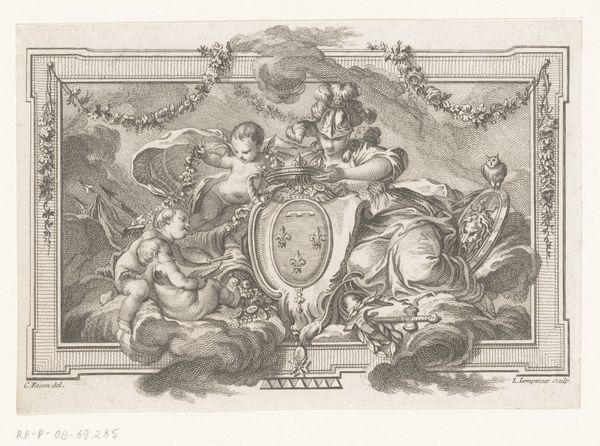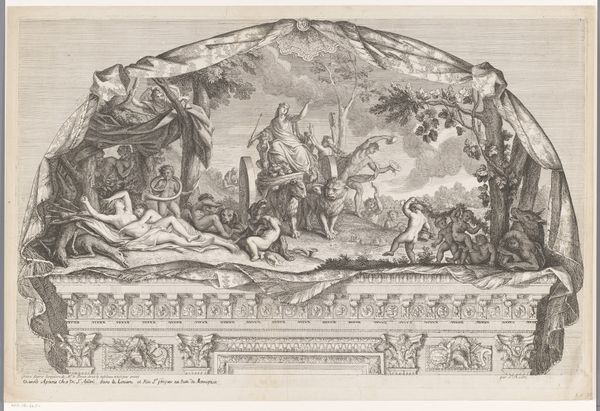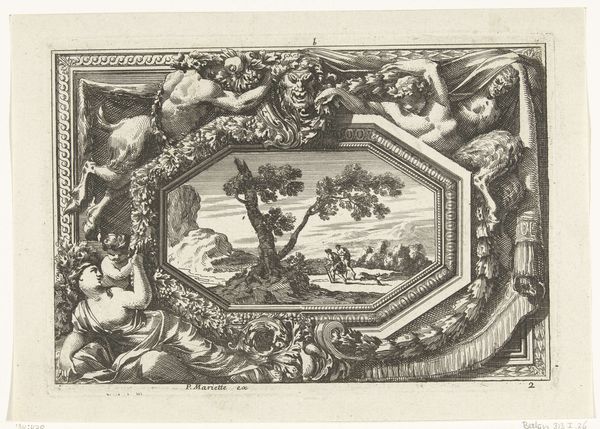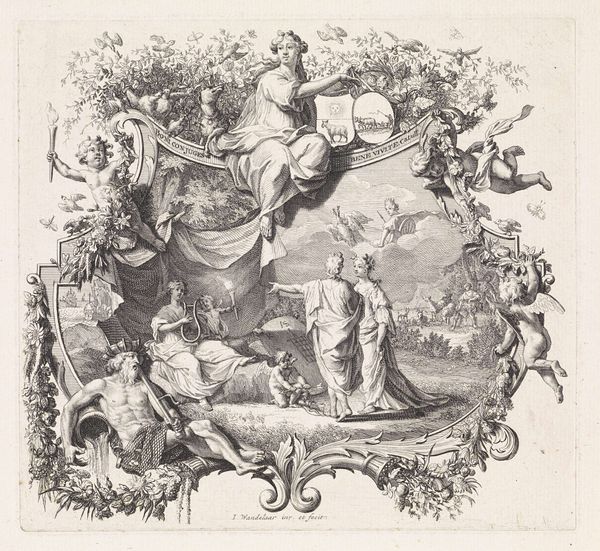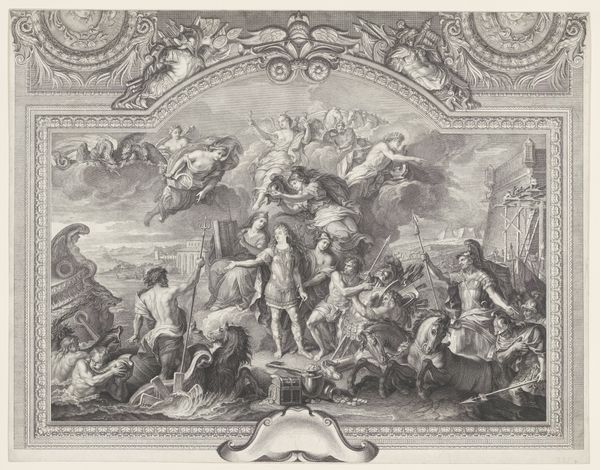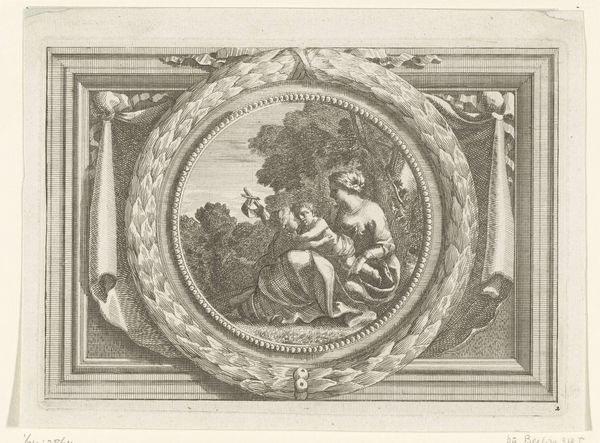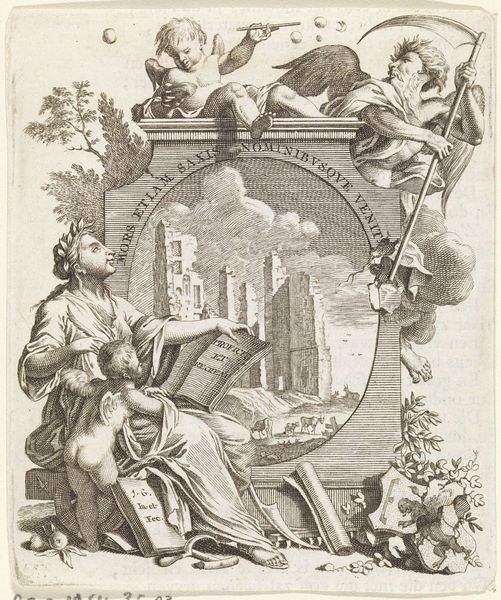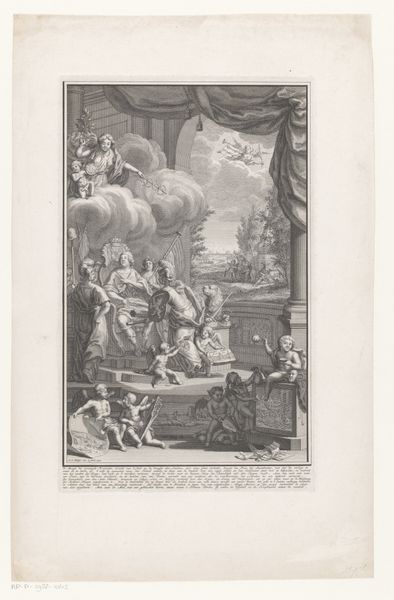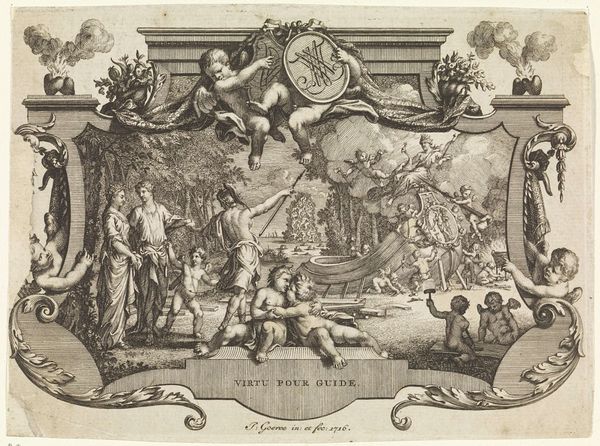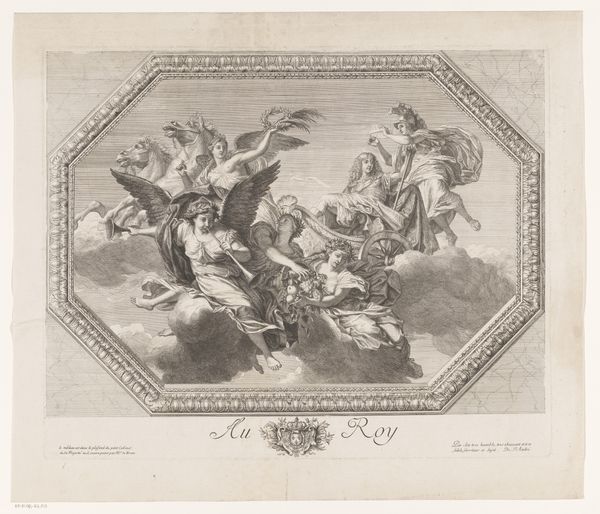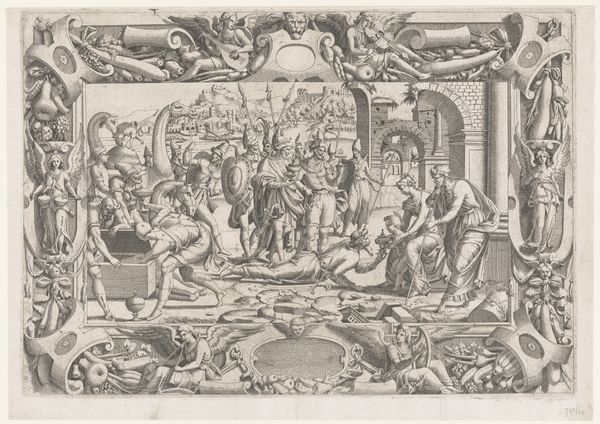
engraving
#
narrative-art
#
baroque
#
pen drawing
#
old engraving style
#
landscape
#
classical-realism
#
history-painting
#
engraving
Dimensions: height 425 mm, width 655 mm
Copyright: Rijks Museum: Open Domain
This print depicting Odysseus led to the palace of Alkinoös was created by Jean-Baptiste Nolin in 1693. It’s an engraving, which means the image was incised into a metal plate, likely copper, using a tool called a burin. The fineness of the lines speaks to the engraver's skill. Notice how the varying depths and densities create a range of tones, from the light sky to the shadowed figures. This wasn’t just a technical exercise; it was about artistry. Nolin had to translate the scene into a language of line, carefully considering how each mark would contribute to the overall effect. Engraving demanded precision and patience. It was a labor-intensive process, requiring hours of meticulous work. In Nolin's time, prints like these were a primary means of disseminating images, allowing stories and ideas to circulate widely. Appreciating the craft behind this print invites us to consider the social role of image-making, and the skilled labor involved in bringing such scenes to life.
Comments
No comments
Be the first to comment and join the conversation on the ultimate creative platform.
